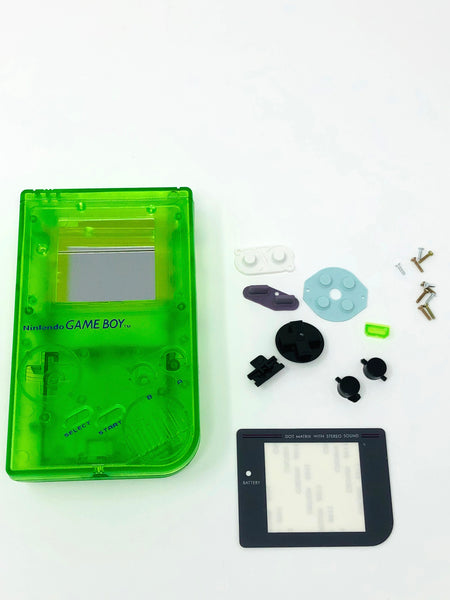

This is not the case with the Game Boy DMG, but I seem some dimming appearing when the cartridge is being read. No idea what’s going on, but the additional drain on the batteries with the backlight on the Game Boy Pocket and the EverDrive x3 when it’s loading SD card content makes the system reset. I got a Game Boy EverDrive x3 and it won’t work on the pocket with backlight. On the Game Boy Pocket, bivert generally didn’t really do much, and with the pale yellow background it wasn’t really needed. I added some black masking tape around the border of the screen just to clean it up. The pixels are blue funnily enough, but very clear.

The pocket screen with washed yellow is also calmer and pretty great I didn’t even bother with the bivert on that one! For the Game Boy Pocket, make sure to connect the backlight to the cartridge pins though and not the capacitor in the front, as this dims the screen enormously.ĭepends: it made a huge difference on the Game Boy DMG screen with white backlight – the screen is far out the cleanest and sharpest. That’s why, for the DMG, I used a white backlight with bivert mod, which is much calmer and sharper. Take note, the washed yellow on the DMG screen seems a lot brighter than the Pocket screen, and gets a little unpleasant after a while. Pale yellow seems to be closest to the original screen of the Game Boy, so I bought a bunch of those. That just leaves Yellow, Washed Yellow and White. all seem a bit crazy for me, and don’t seem like a very pleasing authentic experience. Colors like teal, blue, red, orange, etc. So for the backlight I wavered between sharp image and nostalgic authenticity. You’ll need their backlight v3 and possibly a bivert chip, but before you do, read the next paragraph. I bought my gear at handheld legends, they’re quick to respond, have a lotta stuff, not too expensive, good (not endorsed by them btw). Replace the buttons if you want though, these are pretty good, and definitely get that awesome glass screen replacement – very nice. The replacement cases are generally kinda cheaper and flimsy, so best to stick with oldschool. If the shell is shoddy, you can replace them with cases on eBay for less than 10 bucks, however – I prefer to take that money and buy a better quality original.
GAME BOY DMG GLASS SCREEN HOW TO
There are plenty of tutorials online that show you how to do this, but here’s a few practical things I’ve learned along the way – gather round for storytime!įirst, get yourself a run-down old-school Game Boy or Game Boy Pocket – should be easy enough, they’re everywhere. If you want to try modding but never done it before, start with this – it’s easy, cheap, cool, effective and satisfying. Here are a few hidden gems often overlooked by the Game Boy community.I’ve been modding systems for a while now, and so far the easiest and most fun one has been backlight modding classic Game Boys and Game Boy Pockets. Related: Why Retro Game Prices Are Skyrocketing During COVID-19Įven now, more than 30 years after its launch, retro game fans are still hunting for new games to play on their Game Boys and Game Boy emulators. Being bundled with the now-ubiquitous puzzle game Tetris was the cherry on top, making the Game Boy a true icon of the 1990s. High sales then ensured lots of third-party game support, which, in turn, only made it more popular. The Game Boy's initial success over its more powerful competitors is generally attributed to its superior battery life and more durable (and thus more portable) build. While it may not have had the power of Sega's Game Gear or the Atari Lynx, the original Game Boy (also known as the DMG) supported a massive library of more than 1000 games, meaning many great hidden gems were overlooked by fans of classics like Link's Awakening and Super Mario Land.

The Nintendo Game Boy's grayscale, 8-bit hardware was already dated within a year of its 1989 release, but that didn't stop it from dominating the handheld gaming market for the next decade and still being a source of fun today.


 0 kommentar(er)
0 kommentar(er)
